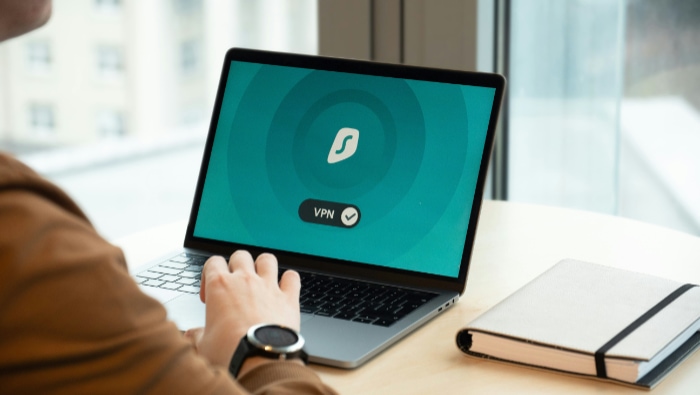What Is the Dark Web? How Privacy and Crime Collide

Hidden beneath the familiar Internet browsed every day lurks a parallel universe filled with mystery and intrigue: the dark web. This concealed network serves as a sanctuary for those seeking privacy, anonymity, and freedom from government surveillance, yet it’s also a hotspot for shadowy dealings and cybercrime.
News headlines spotlight notorious online black markets and high-profile law enforcement takedowns, but there’s much more to this obscure segment of the web than illegal activity. Gaining a glimpse into the dark web reveals its technical foundations, diverse user communities, and the ongoing tug-of-war between privacy advocates and criminal enterprises.
Defining the Dark Web
The internet most people interact with daily is only a small sliver of everything that truly exists online. Different layers offer varying degrees of accessibility, privacy, and visibility.
To fully grasp what the dark web is, it's important to distinguish it from its better-known counterparts and understand how its technical foundations help maintain secrecy. Peering behind the familiar search bars reveals a much more complex and hidden network.
Surface Web vs. Deep Web vs. Dark Web
Grasping where the dark web fits requires a closer look at the distinctions among the surface web, deep web, and dark web. The surface web consists of websites indexed by popular search engines like Google, Bing, or Yahoo.
News articles, public social media profiles, and online shops all make up this layer; anyone with a browser and internet connection can access these pages without special tools or authorization.
Just beneath lies the deep web, which holds everything not indexed by search engines. This includes password-protected email accounts, private company databases, subscription-based resources, and even school intranets.
Access usually requires authorization, but no special technology beyond a web browser is needed.
The dark web forms a hidden corner of the deep web, specifically designed for anonymity. Standard search engines cannot index these sites, and they are intentionally shielded from public view.
Unique domain suffixes like .onion point to sites that require specialized software for access. Activities and communities within the dark web often value privacy above all else, leading to both legitimate uses and illicit markets thriving far from the open internet's gaze.
Technical Infrastructure
Maintaining privacy on the dark web relies on advanced technology. The Tor network plays a central role, offering a way for users to obscure their identities and activities.
Tor operates by routing traffic through multiple volunteer-run servers around the globe, a process known as onion routing. Each step along the way encrypts the data again, like peeling back layers of an onion.
This multilayered encryption ensures that no single point reveals both the user’s identity and their destination, effectively scrambling any traces that might otherwise link a person to their activity.
Encryption is fundamental throughout this process. By continuously encrypting information, the dark web blocks traditional surveillance and traffic analysis techniques.
This technical foundation is why privacy advocates, journalists, and those living under oppressive regimes turn to the dark web, despite its reputation.
Access Requirements
Entering the dark web demands more than just a web address. Specialized browsers, most notably Tor Browser, are necessary to connect with .onion sites.
Tor Browser is designed to work seamlessly with the Tor network, keeping both users and the websites they visit anonymous. Without such a browser, dark web addresses remain unreachable.
Search engines like Grams once provided listings of dark web sites, although most search tools in this sphere operate very differently from familiar engines like Google. Listings are limited, with results chosen for privacy and security rather than popularity or commercial relevance.
Gaining access often requires extra caution, including following strict security practices and sometimes even receiving direct invitations to more exclusive forums.
Historical Evolution

Few corners of the Internet have a backstory as layered and surprising as the dark web. What began as a government-backed experiment to protect sensitive communications has grown into a global phenomenon, encompassing everything from idealistic communities focused on privacy to notorious underground markets.
Charting this evolution reveals how shifting social, ethical, and technological priorities have shaped the hidden web into what it is today.
Origins
Efforts to create a truly anonymous online experience can be traced back to the mid-1990s. Researchers at the United States Naval Research Laboratory set out to develop a method for secure, untraceable communication for military and intelligence operations.
The result was The Onion Routing project, better known as Tor. Rather than connecting directly to a server, Tor bounces requests through a distributed network, obscuring the original user’s identity and location.
For governments, activists, or anyone needing protection against surveillance, this advancement marked a dramatic leap forward in internet privacy.
Expansion
The principles behind Tor soon inspired civilian projects aimed at broader audiences. In 2000, Freenet emerged as a decentralized platform emphasizing censorship resistance and anonymous publishing.
Instead of relying on centralized servers, Freenet distributed content across users’ computers, making tracking or taking down information far more difficult. Privacy-focused communities quickly formed around Freenet and similar technologies, including the Invisible Internet Project (I2P).
These networks offered safe havens for activists, researchers, and ordinary people seeking an outlet for free expression or access to restricted material.
Dual-Use Shift
Wider accessibility and robust anonymity created new possibilities-and new risks. As activists and journalists embraced these tools for sharing information in oppressive environments, others recognized their value for less noble purposes.
The same invisibility that shielded whistleblowers also attracted those seeking to operate outside the law, leading to the emergence of illegal marketplaces and cybercriminal forums. High-profile leaks and anonymous online protests gave the dark web a sense of power and intrigue, while black markets and hacking collectives cemented its reputation for danger.
The duality of the dark web, serving both as a force for good and a breeding ground for crime, continues to drive fierce debate and evolving use cases across the globe.
Use Cases

The dark web’s unique blend of privacy and secrecy has shaped it into a space with contrasting uses. While notorious for criminal activity, it also serves as an important tool for those seeking safety and freedom of expression.
Examining the range of activities helps paint a more complete picture of why so many people are drawn toward this obscure part of the internet.
Legal Applications
Privacy protections offered by the dark web have been a lifeline for many who face censorship, surveillance, or persecution. Journalists often rely on secure channels to communicate with sources, especially when reporting on sensitive topics or oppressive regimes.
Anonymity shields both the journalist and the informant, allowing information to come to light without endangering lives.
Dissidents and activists operating under strict government controls turn to the dark web to organize, exchange ideas, and share censored information. Accessing blocked news articles, academic journals, or political resources becomes possible for those living under regimes that restrict internet content.
For many, such tools are not only practical but may represent the only safe route to unbiased knowledge or meaningful discussion.
Illegal Activities
While anonymity brings benefits, it also attracts those hoping to conceal illegal activity. Hidden marketplaces have flourished, offering everything from illegal drugs and firearms to stolen data and counterfeit documentation.
Silk Road and AlphaBay are two infamous examples that drew global attention, revealing the scale and sophistication of underground commerce conducted in secrecy.
Cybercrime extends far beyond simple trade in goods. Criminals leverage the dark web to spread malware and ransomware, orchestrate data breaches, or recruit for hacking campaigns.
The promise of untraceable transactions and communication emboldens bad actors, who build thriving networks centered around fraud, identity theft, and digital extortion.
Risks, Challenges, and Mitigation Strategies

While the dark web promises privacy and unrestricted access, it also introduces significant hazards. Users often face hidden cyber threats, aggressive law enforcement interventions, and ethical challenges.
Navigating these risks requires both caution and practical knowledge.
Cybersecurity Threats
Entering the dark web exposes even seasoned internet users to serious cybersecurity dangers. Malware is widespread, often packaged within downloads that appear safe or bundled with seemingly harmless software.
Phishing operations are common, where fraudulent versions of trusted sites trick users into surrendering credentials or cryptocurrency. Scams and deception are everyday occurrences, from fake marketplaces to empty promises of rare items or services.
The lack of oversight or meaningful dispute resolution amplifies the consequences of any misstep, making trust in this environment a rare commodity.
Law Enforcement Efforts
Authorities worldwide have intensified efforts to dismantle illegal activities thriving in the shadows of the dark web. Operations targeting large-scale markets have made headlines, including the dramatic takedowns of Hydra Market, along with other networks such as Playpen.
Hydra Market, once the largest Russian-language illicit marketplace, facilitated countless transactions involving drugs, stolen data, and counterfeit documents. Its closure sent shockwaves through the community and demonstrated how law enforcement agencies are willing to invest significant resources to disrupt major hubs of criminal activity.
Each takedown pushes those involved to adapt and seek new methods for secrecy and security, fueling a continuous cycle between authorities and those who wish to evade them.
Safety Practices
Protecting oneself while traversing the dark web demands vigilance and robust cybersecurity habits. Many users adopt virtual private networks (VPNs) to mask their location on top of the anonymity provided by Tor.
Avoiding personal data exposure is critical; revealing names or other identifying details can have severe consequences. Defensive browsing practices, such as disabling scripts and running advanced security software, help reduce exposure to malicious content.
Ethical considerations also play a role, as the line between seeking information and crossing into illegal activity can blur quickly. Exercising strong judgment and prioritizing safety measures is essential to minimize risk while benefiting from the privacy and freedom the dark web offers.
Conclusion
Peering into the dark web reveals a world full of contrast, where advanced privacy tools serve both those seeking freedom and those pursuing illicit ends. Robust technical infrastructure, such as Tor and onion routing, has empowered journalists, activists, and everyday individuals to communicate securely and access censored information.
At the same time, those same layers of anonymity have given rise to criminal marketplaces, cybercrime, and ongoing cat-and-mouse games with law enforcement. Risks such as malware, scams, and potential legal consequences underscore the need for caution, strong ethics, and reliable security habits.
Balancing its promise of privacy with the dangers lurking beneath the surface, the dark web stands as a powerful reminder of how technology shapes both opportunity and risk in the online world.


